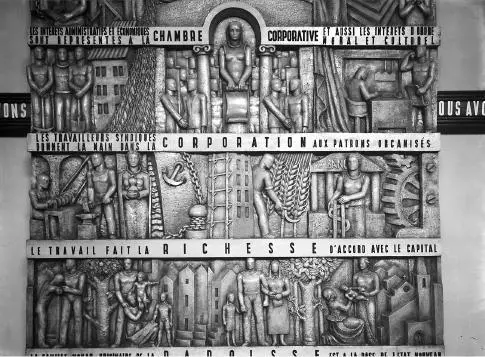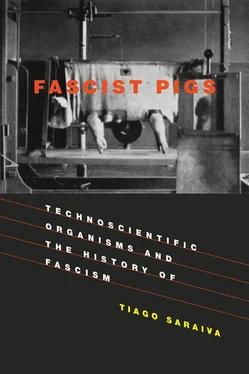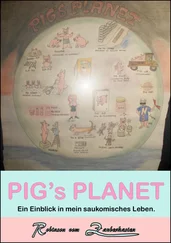During the 1930s there was no large-scale social turmoil in the Alentejo region. Sharecroppers cultivated the heaths and received subsidies for expanding wheat acreage, and wage laborers were employed by estates profiting from high wheat prices. But from 1943 until 1962, the rising seasonal unemployment, due to increasing mechanization and the expulsion of sharecroppers from eroded thin schist soils, would transform Alentejo into an area of growing communist resistance to the regime. [76]The corporatist structure integrated every individual into an allegedly organic unit, and those agitating for better wages or other forms of political representation and work unionization outside the state system became objects of violent repression by the National Republican Guard or the Political Police, articulated with a politically controlled judiciary system and concentration camps in the colonies. [77]As one of the grimmest slogans of Salazar’s New State put it, “a place for everyone; each one in its proper place.” [78]
To summarize, the geneticist António Sousa da Câmara was the executive organizer of the Wheat Campaign, and the National Agricultural Experiment Station (EAN) was born directly from the recognition of the importance of his research for food self-sufficiency. The National Federation of Wheat Producers (FNPT) funded much of the work undertaken by the breeding department of the EAN in Elvas. In the opposite direction, the high-yielding seeds of the breeder’s plots of Elvas sustained the extended distribution network of the FNPT. The new strains and their response to chemical fertilizers were crucial in sustaining and enlarging the large wheat estates, the core of the system.
It should be apparent that the main question about science and fascism is not whether scientists were themselves fascist or not. On the one hand, we have a traditional arrangement for state sponsorship of science, with the agencies of the fascist regime supporting scientific research, funding the creation of the National Agricultural Experiment Station (EAN), and supporting some of the EAN’s departments through corporatist agencies. Nothing very surprising there. But, more interestingly, we have scientists and their technoscientific organisms—high-yielding seeds—participating directly in the building of a corporatist state that removed all mechanisms of liberal representation and replaced them with an allegedly organic structure based on “economic solidarities.” The first and one of the main organs of this structure in Portugal, the National Federation of Wheat Producers (FNPT), bought farmers’ production and distributed seeds developed by the breeding department of the EAN. The new strains of wheat weaved together large landowners of the Alentejo region, sharecroppers enlarging the cultivated areas of the large estates, underpaid and oppressed wage laborers cultivating the richer deeper soils of the properties, large chemical factories in the capital city, bread self-sufficiency, and the corporatist tripartite structure of the FNPT, the Farmers’ Guilds, and the Casas do Povo. Here was the fascists’ alternative modernist vision: an organic nation feeding and growing itself by making, distributing, cultivating, and consuming breeders’ technoscientific organisms.

Figure 2.6 A bas-relief by Henri Bettencourt of the Portuguese Corporatist New State, carved for Portugal’s pavilion at the Paris World Exhibition, 1937.
(Fundo Mário Novais, Art Library of the Calouste Gulbenkian Foundation)
Modernism, Genetics, and the New State
In Portugal, as in Italy, there was no contradiction between ruralization and modernization. Whereas Pequito Rebelo had a passion for both aviation and agriculture, and thus could effortless reproduce Mussolini’s futuristic combination of wheat thresher and intrepid aviator, no one would have imagined Salazar wearing goggles. Salazar’s character seems to support the traditionalist interpretation of his regime as a conservative dictatorship, as evidenced by his suspicion of urban life and his praise of modest pastoral virtues. But Salazar himself suggested alternative interpretations. [79]In his 1938 summary of the accomplishments of the regime, he contrasted the “economic and social revolution” that had taken place in Portugal (a “revolution on the march”) with simple “financial reform.” [80]In 1966, the old dictator could still boost that “in our century, we are the only corporatist revolution that triumphs.” [81]Here I want to insist that to perceive the modernist nature of the Portuguese fascist New State one can’t shy away from agriculture. It was through agriculture that the new alternative modernity of Salazar’s fascist corporatist state came into being.
In 1936 new legislation had reorganized the Ministry of Agriculture, recognizing explicitly the role of scientific research in ruralizing the country. [82]The law founded both the Board for Internal Colonization, which was created to plan the settlement of southern Portugal with people from overpopulated areas of the country, and the National Agricultural Experiment Station (EAN), the scientific arm of the ministry. [83]A year later, Câmara, then only 36 years old, was nominated director of the new EAN. Not only was Câmara a distinguished participant in the Wheat Campaign, and of all other production battles that followed; he also had experience in renowned international research institutions. Like many other promising young Portuguese scientists, he had been granted a scholarship by the Board of National Education that had been founded in 1929 by the government to fund the training of the new technical elite by supporting new research groups and by financing stays in internationally respected centers. [84]Câmara spent 1932–33 at Cambridge and Edinburgh and 1936 at the Kaiser Wilhelm Institut für Biologie in Berlin. [85]It was after his years in Scotland and England that he started his research in cytogenetics, but it was his Berlin experience that offered him the connections between genetics research and the political economy of fascism and that directly inspired the design of the EAN. It is not incidental that after the strong presence of Italian fascism in Portuguese fields in the early 1930s Nazism had become the main reference point for New State elites.
In a conference held in Lisbon in 1937 at the Society of Agricultural Sciences, Câmara informed his audience how the “national-socialist titanic effort of reorganizing the country echoed in the laboratories” of the Kaiser Wilhelm Institut für Biologie in Berlin-Dahlem: [86]
How could I be surprised with the nationalistic atmosphere around me when I, already for some years, know no other? How could I be surprised with Hitler’s propaganda when I was propagandizing in my own country? Were there scientists who had Hitler’s portrait on their desktops? But didn’t I have in my Dahlem Laboratory Salazar’s portrait? [87]
Perhaps more important than a shared cult of the leader is the presence of the future director of the EAN in a laboratory that was able to sustain the importance of fundamental research for Germany’s dreams of autarky. [88]Câmara, whose work was focused on the production of genetic mutations by physical agents (temperature and x rays), would certainly have shared that view. Indeed, he repeatedly expressed his opinions on the relationship between applied and pure research, paying tribute to the latter by asserting that “only with pure science may practical problems be solved.” [89]
Apparently that was also the opinion of the Minister of Agriculture, Rafael Duque, who after a visit to the modest Genetics Laboratory at the Lisbon Agronomy Institute decided to finance Câmara’s research on mutations more generously. [90]More than that, he asked Câmara for a report on how agricultural research should be organized in Portugal, and that report would become the founding document of the EAN. [91]Câmara, of course, offered genetics the role of “central science” of the would-be institution. [92]The tasks to be undertaken by the Department of Cytology and Genetics, headed by Câmara himself, were divided into solving practical problems directly connected with plant breeding, opening new possibilities to breeders, and attacking problems of pure science such as chromosome variations induced by physical agents or the cytogenetics of Drosophila . This ternary division reproduced exactly the research objectives of Erwin Baur, first director of the Kaiser Wilhelm Institute of Plant Breeding, founded in 1927 in Müncheberg, as described by Câmara in his 1937 account of his Berlin days. [93]
Читать дальше













